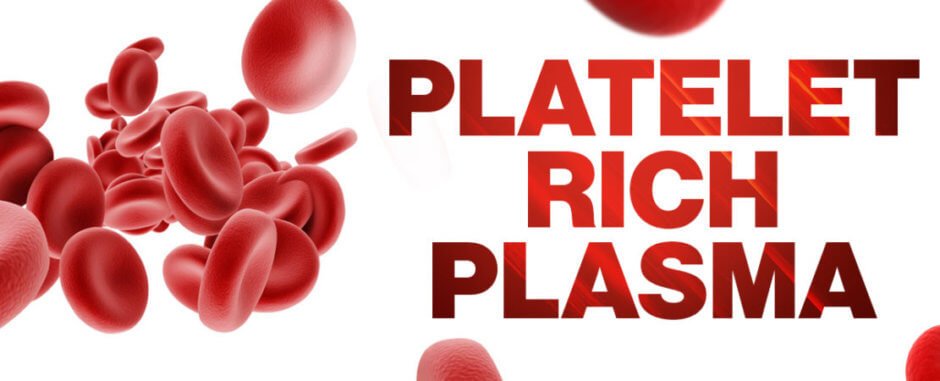Platelet Rich Plasma Injections for the Treatment of Osteoarthritis
At TSMP we have been treating patients for many years with PRP (Platelet Rich Plasma). We use this for many conditions, but the best results we get are with treating Osteoarthritis.
There is now a significant amount of research supporting PRP as a very effective treatment for this condition, even if the arthritis is quite severe. On the other hand, Stem Cell Therapy is still considered “experimental” by most and is not only significantly more expensive but is also limited to the patient population that have access to it (ie younger age groups and minimal levels of arthritis only in most clinics).
What is PRP?
Platelets are small cells in the blood that are important in the formation of blood clots after an injury and also in initiating the healing processes post injury through the release of Growth Factors (They contain Growth Factors for every type of cell in the body).
Plasma is the fluid that all the cells in blood (Red Cells, White Cells and Platelets) are suspended in. It also transports nutrients, glucose, antibodies and many other components in it as well.
So PRP is plasma that has a high concentration of platelets in it.
How and why do we use PRP injections?For arthritis the PRP is collected from the patient and then injected into the joint
PRP injections are useful for symptom relief as follows:
Reduce Pain
Reduce swelling and improve joint function
Possibly repair damage to damaged cartilage
How is PRP prepared?
The patient’s own blood is collected, 6 vials is usual at TSMP.
A centrifuge is utilised to separate the blood into its component parts
The PRP is harvested directly from the blood vials, 1ml from each vial.
Then the PRP is injected or used as required.
PRP shows rapid responses in most people, however there are a small number that will not respond to this treatment. Some people feel relief of symptoms almost immediately, but the majority get benefits within the next few days. Some people can still respond even 1-2 weeks post injection.
The protocols for preparation and provision of PRP are not yet standardised, but at TSMP we do the following protocol:
Initial consultation to assess suitability for PRP or possibly other modalities
Injection number 1 soon after if considered suitable for injection.
Review 1-2 weeks post injection to assess improvement or otherwise
Second injection if required (a small minority of people will need a second one).
Repeat process when first treatment regime wears off.
How long does the treatment last?
Usually PRP gives good relief for up to 12 months
However, we have had patients where it has lasted for 4 years or more
It can be repeated at whatever interval the GP and patient agree is worthwhile
Are there any side effects?
This treatment is well tolerated and usually has no side effects
Possible flare ups of the arthritis can occur in the first 24 hours. Treat with ice and painkillers if this occurs – This is very rare occurrence
Theoretical risk of joint infection – because we are putting a needle into a joint. This complication is so vanishingly small that it can almost be said to not occur but is still a theoretical risk. I can find no published evidence that this has ever happened with PRP.
How does it compare with other treatments?
Exercise
Exercise is the simplest and one of the best treatment modalities for osteoarthritis. There are no head to head studies comparing exercise to PRP, but a recent study compared outcomes of PRP injections in knee osteoarthritis with and without exercise. The group that had PRP with concomitant exercise had much better outcomes, suggesting synergy between PRP and exercise.
NSAIDs (Anti-inflammatories)
These are effective but have long term side effects including gastric irritation and bleeding, kidney damage and rarely fluid retention and other cardiac side effects. There has been one study comparing NSAID and PRP treatments and treatment with PRP gave greater and longer lasting improvements in knee function.
Corticosteroid injections
Even though these injections are still used a lot in treatment, when compared to placebo these have a small benefit. Thirteen weeks post injection but no difference at 26 weeks post injection. PRP usually outperforms Corticosteroids with benefits still obvious at the one year mark and beyond (even with one injection).
Saline
Saline is usually used as a control in studies, but the placebo effect is still quite powerful. However, PRP has benefits greater than placebo in all trials published. Some of these trials have been double blinded and the benefits of PRP still are seen.
Hyaluronic Acid.
This is an artificial synovial fluid that is injected into the joint directly. There have been several trials comparing this with PRP. The majority show that PRP produces superior results, but this is an effective treatment as well.
Stem Cells
This is a more recent modality. Most stem cells are grown from fat cells, but some from bone marrow. The evidence in treatment of osteoarthritis is sparse and there is no strong evidence that this treatment provides benefits greater than placebo at this stage. More study is required in this area.
Conclusions
Platelet Rich Plasma is a very safe and efficacious treatment for osteoarthritis. Most of the evidence is based around knee osteoarthritis, but any synovial joint (shoulder, elbow, wrist, hip, knee, ankle etc, even toes and fingers sometimes) should and usually does respond to PRP. It is easy to do, and results are usually rapid. It is not a cure for osteoarthritis, but symptom control and improved function are the goals.
Make an appointment to discuss this treatment modality with your GP if you would like to know more.
There is a recent USA based review of this modality that might be of interest as well.
Excerpts and links to this blog may be used, provided that full and clear credit is given to Townsville & Suburban Medical Practice with appropriate and specific direction to the original content.

